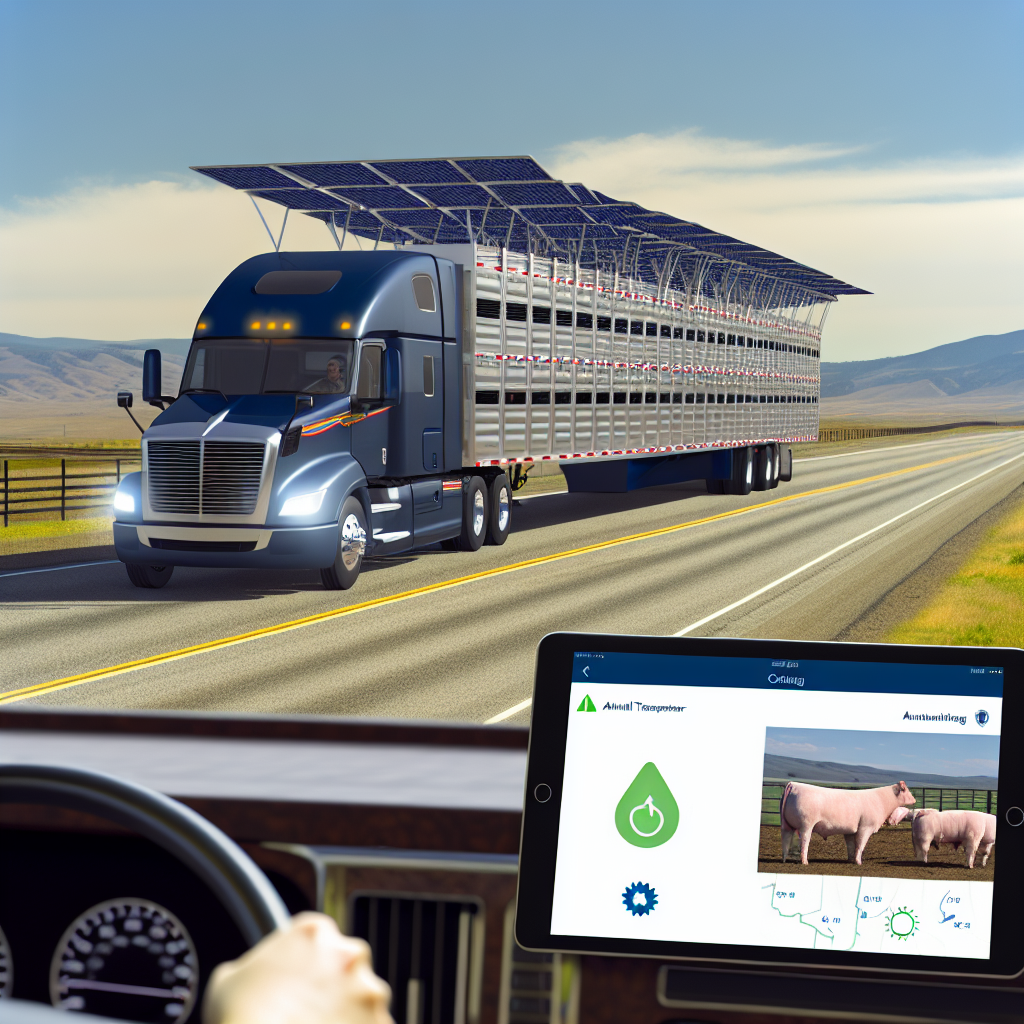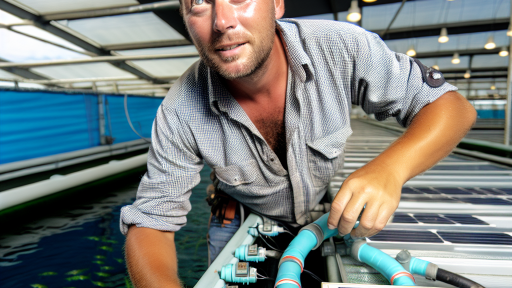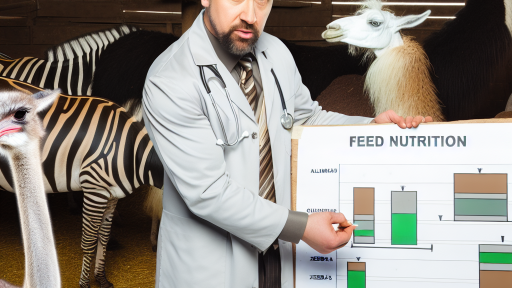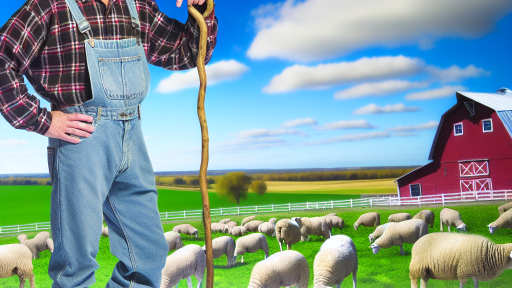Overview of Current Livestock Transportation Methods
Traditional Transportation Practices
Livestock transportation often relies on time-honored methods.
Trucks serve as the primary mode for transporting animals.
These vehicles accommodate various species and sizes.
Rail transportation also plays a role, particularly for long distances.
Historically, railroads have moved cattle effectively across states.
Transporting livestock by sea is another method for international trade.
Specialized vessels ensure animal welfare during transit.
Challenges in Current Methods
Traditional livestock transportation faces several challenges.
Weather conditions can significantly impact travel time.
Additionally, animal stress during long journeys raises concerns.
Moreover, biosecurity risks also threaten livestock health.
Regulatory compliance further complicates the transportation process.
Emerging Technologies in Transportation
Innovations are reshaping how livestock is transported today.
Data analytics help optimize routes and reduce travel time.
GPS technology allows real-time tracking of livestock vehicles.
Transform Your Agribusiness
Unlock your farm's potential with expert advice tailored to your needs. Get actionable steps that drive real results.
Get StartedAdvanced monitoring systems provide crucial health data during transit.
Furthermore, automated systems improve loading and unloading efficiency.
Future Directions in Livestock Transport
The future promises even more advancements in livestock transportation.
Electric vehicles may become the standard for short hauls.
Additionally, drone technology could play a role in logistics.
These developments will likely enhance animal welfare standards.
The livestock transportation industry is evolving rapidly.
Emerging Technologies in Livestock Transportation
Overview of Current Innovations
Innovative technologies reshape livestock transportation today.
These advancements enhance safety, efficiency, and animal welfare.
From tracking systems to climate control, industry practices improve rapidly.
Tracking and Monitoring Systems
GPS technology plays a pivotal role in livestock transportation.
It allows real-time tracking of animals during transit.
Moreover, these systems reduce the risk of theft and loss.
They also provide valuable data on routes and travel times.
Climate Control Technologies
Temperature regulation is crucial for the welfare of transported livestock.
New climate control systems maintain optimal conditions inside trailers.
This technology significantly reduces stress on animals during travel.
As a result, it leads to improved health outcomes post-transport.
Automation and Robotics
Automation technologies streamline loading and unloading processes.
Robotic systems help minimize human errors during these tasks.
This innovation increases efficiency and reduces handling stress for animals.
Drones for Inspection and Surveillance
Drones enhance oversight during livestock transport.
They assist in monitoring livestock conditions without direct contact.
This technology ensures compliance with safety and welfare standards.
Showcase Your Farming Business
Publish your professional farming services profile on our blog for a one-time fee of $200 and reach a dedicated audience of farmers and agribusiness owners.
Publish Your ProfileFurthermore, drones can quickly identify issues that need attention.
Telematics in Transportation
Telematics systems integrate various transportation data sources.
They provide insights into vehicle performance and animal conditions.
This information helps optimize routes and vehicle maintenance schedules.
Consequently, operators can improve overall operational efficiency.
Blockchain for Transparency
Blockchain technology ensures transparency in livestock transportation.
It allows for secure tracking of animal movements and health records.
This transparency builds trust among consumers and stakeholders alike.
Additionally, it ensures compliance with regulatory requirements.
The Role of GPS and Tracking Systems in Livestock Transport
Ensuring Real-Time Location Tracking
GPS technology revolutionizes livestock transportation by providing real-time location updates.
This capability allows drivers to optimize routes effectively.
Consequently, animals reach their destinations faster and more safely.
Enhancing Safety and Security
Real-time tracking improves the safety of livestock during transport.
It minimizes the risk of theft and ensures the welfare of the animals.
Moreover, monitoring systems alert drivers about potential hazards on the road.
Improving Operational Efficiency
GPS and tracking systems streamline logistics in livestock transport.
These systems allow planners to allocate resources more effectively.
As a result, companies can reduce fuel consumption and operating costs.
Data Analytics for Better Decision Making
Tracking technologies generate valuable data for analysis.
Livestock transporters can identify trends and areas for improvement.
This data-driven approach enhances overall operational efficiency.
Regulatory Compliance and Reporting
GPS tracking helps companies comply with regulations in livestock transport.
These systems provide necessary documentation and reporting capabilities.
Additionally, they help transporters meet international standards for safety.
Discover More: Selecting the Best Routes for Livestock Transport
Innovations in Animal Welfare During Transportation
Technology-Driven Environments
Companies now utilize climate-controlled transportation units.
These units maintain optimal temperature and humidity levels.
Animal welfare is prioritized in these technological upgrades.
Real-time monitoring systems track environmental conditions continuously.
This proactive approach reduces stress for the animals during transit.
Enhanced Monitoring Systems
Cameras are increasingly used within transportation vehicles.
These cameras allow for constant observation of livestock.
Live feeds help ensure welfare concerns are addressed promptly.
Additionally, GPS tracking provides updates on travel routes.
Overall, transparency helps improve accountability and care standards.
Improving Handling and Loading Techniques
Innovative handling techniques reduce stress during loading.
Training programs teach staff about animal behavior and needs.
Furthermore, using hydraulic lifts minimizes physical strain on animals.
This approach encourages a smoother loading and unloading process.
Consequently, animals experience less anxiety and discomfort.
Showcase Your Farming Business
Publish your professional farming services profile on our blog for a one-time fee of $200 and reach a dedicated audience of farmers and agribusiness owners.
Publish Your ProfileData-Driven Insights for Better Practices
The utilization of data analytics enhances transportation efficiency.
Companies analyze past transport data to identify areas for improvement.
Insights gained lead to better route planning and scheduling.
Additionally, adjustments help minimize transport time and stress.
These practices foster a more humane transportation environment.
Collaboration with Stakeholders
Industry collaboration leads to improved transportation standards.
Farms, transporters, and regulatory bodies work together effectively.
This cooperative effort enhances animal welfare regulations.
Furthermore, sharing best practices becomes essential for continuous improvement.
As a result, the entire supply chain benefits from safer practices.
Delve into the Subject: Innovative Technologies Transforming Modern Aquaculture
Implementing Autonomous Vehicles for Livestock Transport
Overview of Autonomous Vehicles in Agriculture
Autonomous vehicles revolutionize the livestock transport industry.
The technology enhances efficiency in moving livestock.
These vehicles eliminate the need for human drivers.
Consequently, they reduce labor costs significantly.
Benefits of Autonomous Livestock Transport
Safety is a primary advantage of autonomous vehicles.
They minimize the risk of accidents during transport.
Additionally, autonomous systems ensure better animal welfare.
For example, they can monitor temperature and ventilation.
Moreover, they offer improved route optimization.
This leads to faster and fresher deliveries.
Challenges of Adopting Autonomous Technology
Despite their benefits, challenges exist in this adoption.
Legal and regulatory hurdles pose significant barriers.
Furthermore, public perception of autonomous vehicles must shift.
Education and awareness campaigns can help in this regard.
Cost can also be a limiting factor for many farmers.
Case Studies of Successful Implementation
Several companies have pioneered the use of autonomous transport.
For instance, AgriTech Innovations has shown promising results.
Their fleet of autonomous trucks has reduced transport times.
Moreover, they have improved the condition of livestock upon arrival.
Another example is FarmBot Transport, which focuses on efficiency.
Future Trends in Livestock Transportation
The future holds exciting possibilities for autonomous vehicles.
Advancements in AI will enhance decision-making capabilities.
Moreover, integration with logistics software will streamline operations.
As technology advances, affordability will likely improve.
Ultimately, these innovations will transform livestock transport.
Delve into the Subject: Seasonal Care Tips for Sheep and Goats

Data Analytics for Optimizing Livestock Transportation Routes
Importance of Data Analytics
Data analytics plays a crucial role in livestock transportation.
It enhances decision-making processes for transport logistics.
Moreover, it improves efficiency and reduces costs.
Showcase Your Farming Business
Publish your professional farming services profile on our blog for a one-time fee of $200 and reach a dedicated audience of farmers and agribusiness owners.
Publish Your ProfileRoute Optimization Techniques
Various techniques exist for optimizing transportation routes.
For instance, predictive analytics helps forecast demand.
It allows transportation managers to allocate resources effectively.
Additionally, real-time data collection enhances route planning.
This dynamic approach ensures timely deliveries.
Geospatial Analysis
Geospatial analysis is a key component in route optimization.
It utilizes geographic data to visualize transportation paths.
By doing so, it identifies the most efficient routes.
Furthermore, it considers factors like road conditions and traffic.
Machine Learning Models
Machine learning models enable advanced analytics for transport routes.
These models learn from historical data to predict outcomes.
Thus, they provide insights into potential delays and risks.
As a result, transportation managers can proactively manage challenges.
Integration with IoT Devices
Integrating data analytics with IoT devices enhances tracking.
IoT sensors monitor conditions during transportation.
This integration provides real-time updates on livestock health.
Consequently, it ensures better welfare standards for animals.
Case Studies and Success Stories
Several companies leverage data analytics for transportation improvements.
For example, Greenfield Livestock implemented route optimization.
They reduced transport times by 30% through data-driven decisions.
Similarly, Meadow Transport enhanced their scheduling efficiency.
As a result, they minimized costs and improved customer satisfaction.
You Might Also Like: Improving Livestock Productivity through Genetics
Sustainability Practices in Livestock Transportation Technology
Efficient Route Planning
Efficient route planning enhances sustainability in livestock transportation.
This technology minimizes travel distances and reduces fuel consumption.
Moreover, it allows for real-time traffic assessments, avoiding congested routes.
Companies like AgriRoute use algorithms to optimize delivery routes.
Animal Welfare Monitoring
Monitoring animal welfare during transport is critical for sustainable practices.
Wearable sensors track the health and behavior of livestock in transit.
These sensors alert drivers to any distress signals among the animals.
For instance, Livestock Guardian has pioneered this technology successfully.
Eco-Friendly Transport Vehicles
Utilizing eco-friendly transport vehicles significantly benefits the environment.
Innovations include electric-powered trucks and biofuel-driven vehicles.
These options significantly cut greenhouse gas emissions compared to traditional trucks.
Additionally, companies are retrofitting existing fleets with greener technology.
Temperature Control Systems
Temperature control systems ensure a safe environment for transported livestock.
These systems regulate temperature and humidity inside transport vehicles.
Maintaining optimal conditions reduces stress and health risks for the animals.
TurboClimate has developed advanced systems used by major transportation companies.
Collaboration Across the Supply Chain
Collaboration among stakeholders promotes sustainability in livestock transport.
Showcase Your Farming Business
Publish your professional farming services profile on our blog for a one-time fee of $200 and reach a dedicated audience of farmers and agribusiness owners.
Publish Your ProfileFarmers, transporters, and processors can share data for better decision-making.
This synergy enhances resource utilization and reduces waste throughout the chain.
Platforms like AgriConnect facilitate this collaboration effectively.
Case Studies of Successful Technological Implementation in Transport
Improving Livestock Welfare with Advanced Transport Solutions
In recent years, several companies have revolutionized livestock transportation.
For instance, FarmLink Technologies integrated real-time tracking for livestock vehicles.
This technology enhances the welfare of animals during their journeys.
With GPS tracking, drivers can avoid congested routes effectively.
Consequently, this reduces transportation time and stress for the animals.
Enhancing Safety and Efficiency through Automation
Many transportation companies are turning to automation to improve safety.
One notable example is AgriTech Innovations.
They developed automated loading systems that streamline the loading process.
This technology minimizes human error and increases overall efficiency.
Moreover, automated vehicles ensure consistent temperature control during transport.
Sustainable Practices in Livestock Transportation
EcoTrans Logistics implemented sustainable practices in their operations.
They utilize energy-efficient vehicles to reduce their carbon footprint.
This strategy not only lowers operating costs but also benefits the environment.
Furthermore, EcoTrans monitors emissions through real-time data analytics.
Such initiatives promote environmental stewardship within the livestock industry.
Utilizing Data Analytics for Better Decision Making
Data analytics plays a significant role in livestock transportation efficiency.
Transport Solutions Co. uses data to optimize routes based on several factors.
Weather, traffic patterns, and animal health are analyzed for better decision-making.
By making informed choices, they enhance delivery times and animal wellbeing.
This proactive approach significantly reduces operational costs.
Case Study: Integrating Blockchain for Traceability
Traceability in livestock transport is crucial for ensuring quality and safety.
Blockchain technology provides a secure method for tracking livestock movements.
Traceable Farms recently implemented this system to enhance transparency.
Each animal’s journey is recorded, from farm to market.
This innovation builds trust between producers and consumers.
Future Perspectives on Technological Advancements
As technology continues to evolve, livestock transportation will further benefit.
Future innovations may include AI-driven logistics management tools.
This could provide higher accuracy in demand forecasting.
Additionally, developments in IoT could enhance real-time monitoring capabilities.
Ultimately, these advancements will contribute to more efficient livestock transport systems.




